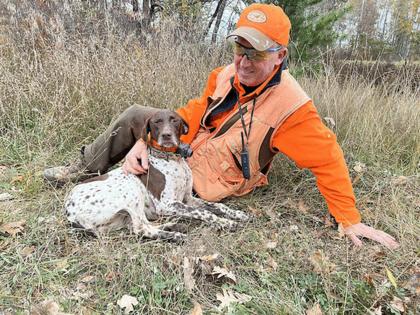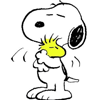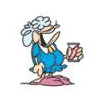Dennis Anderson: For talented dogs and the hunters who follow them, ruffed grouse are the point
Published in Outdoors
MINNEAPOLIS — Minnesotans chasing a cavalcade of seasonal colors often parade at this time of year from the Twin Cities to Duluth and from there farther north along the Lake Superior shoreline. Alternatively they divert at Moose Lake or Cloquet and angle toward Grand Rapids or perhaps continue to Ely or International Falls.
What’s missed in this rush to see maples, tamaracks, birches and oaks ablaze in autumnal colors are the cat-and-mouse scurries that occur in and among these trees far from the madding crowd.
Consider ruffed grouse.
Preparing for winter, in September and October these elusive game birds fatten themselves on gray dogwood berries, hazel catkins, high bush cranberries and, where they can find them, acorns.
Alert for predators, grouse keep a sharp eye out for goshawks, great horned owls and a host of four-legged critters, including bobcats, fishers and foxes.
Men, women and children also are among those who have hunted Ol’ Ruff, dating to when Native Americans popped them with blunted arrows, or snared or trapped them.
Some early colonists amended this process, preferring instead to pursue ruffed grouse by putting pointing dogs to ground and following them with gun in hand — a grand old British tradition.
Among the first of these bird-finding imports were English setters, followed by English pointers. Or, as the latter are commonly known today, just pointers.
Doubtless these early canines were crude bird finders, and their masters likely toted double guns that kicked like mules. But together they enlivened a foot-walking, pointing-dog-following American tradition that still thrills uplanders today, perhaps nowhere more so than in Minnesota, thanks to its vast public forest lands.
Now, in mid-September, hunters gather in northern Minnesota at Pineridge Grouse Camp.
Owned by Jerry Havel, Pineridge in coming weeks will be surrounded by a riot of flame-colored leaves, into which, each morning, camp guests and their guides and dogs will immerse themselves in a sporting challenge like few others.
“We host eight to 10 clients at a time, and in some ways we hunt grouse the same way they were hunted 100 years ago,” Havel said. “We run bells on our dogs, not electronic beepers, and we hunt behind good dogs in good grouse cover. Most of our shooting is with double guns, and at night we sit around the fireplace and talk about grouse and perhaps especially about dogs.”
Dogs are centerpieces of these undertakings because ruffed grouse are crafty, if not diabolical.
“Finding grouse comes down to a dog that understands grouse cover and grouse scent,” Havel said. “The old-timers used to say it takes until age 4 or 5 to make a good grouse dog. Depending how much they’re hunted, some can do it in two or three years.”
Bred for athleticism, endurance, toughness and biddability, setters and pointers — as well as the German shorthairs, Drahthaars and other continental breeds that also point — hoover the forest at high speed, alert for any hint of bird scent.
Finding it, they freeze, or point, calculating as they do the distance and direction of the bird they have pinned down.
Their whereabouts discovered, some grouse will simply scurry away on foot, presenting the dog with a choice: Stay on point until the hunter catches up and walks ahead, hoping the bird flushes for a shot.
Or, reposition and point the bird again, while waiting for the hunter.
In either case, the dog must not put the bird to wing before the hunter comes forward to flush it for a possible shot.
“You don’t want the dog to crowd the bird too much when he points,” said Jerry Kolter, who with his wife, Betsy Danielson, breeds and trains English setters and pointers at their Northwoods Bird Dogs kennel near Sandstone, Minn. “By the same token, you don’t want the dog to point the bird from so far away you don’t know where the bird is.
“There’s a sweet spot for dogs in these situations,” Kolter said, “and the better bred dogs will take fewer birds to figure out where it is.”
Ted Dick, a Department of Natural Resources forest habitat supervisor living near Cohasset, finds comfort, inspiration — and challenge — trekking Minnesota’s North Woods in fall.
Like other grouse hunters, Dick often steps over deadfalls while following his two English setters, while simultaneously getting whacked in the face by aspen or other tree branches.
Shouldering a gun in this environment is difficult enough. Connecting a load of chilled 8s with a fast-disappearing grouse is even more so.
“I’m biased,” Dick said. “But to me, the ruffed grouse is the king of game birds. That’s not to say the prairie game birds — sharptails and Huns, for instance, or pheasants for that matter — aren’t fun and challenging. But the cover where ruffed grouse are hunted, and the difficulty of shots, and the speed required in shooting, that’s the difference."
In July, the DNR reported ruffed grouse drumming counts this spring were lower than they were last year, with 1.8 drums recorded per stop, compared with 2.3 in 2024.
Last year’s count was the highest 10-year cycle population peak for Minnesota ruffed grouse since 1972, the DNR said.
How much credence scattergunners — or DNR wildlife biologists and managers, for that matter — place in these numbers is an open question. Predation, spring and early summer rains, and disease, especially West Nile, can affect nesting success and chick survival, both of which ultimately determine how many birds hunters will encounter in fall.
The good news, Kolter and Danielson said, is that their setter and pointer-buying clientele is skewing younger.
“Also, they’re indicating they’re getting into grouse hunting with pointing dogs for the experience of it, and they want to do it on public land,” Kolter said.
Acknowledging that pointing dogs often have more energy than other sporting breeds, Dick nevertheless encourages anyone who is interested to join the age-old, foot-walking, pointing-dog-following way of grouse hunting.
“If I can train these dogs, anyone can,” he said.
____
©2025 The Minnesota Star Tribune. Visit at startribune.com. Distributed by Tribune Content Agency, LLC.










Comments